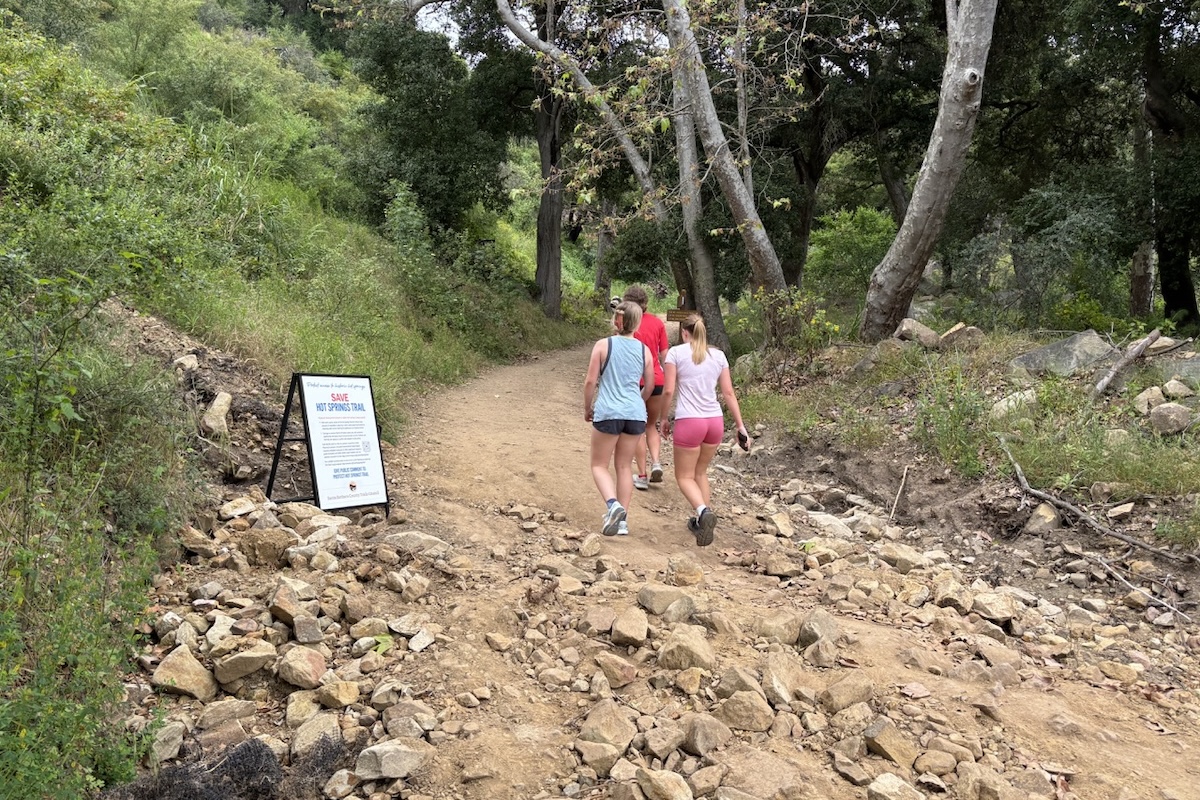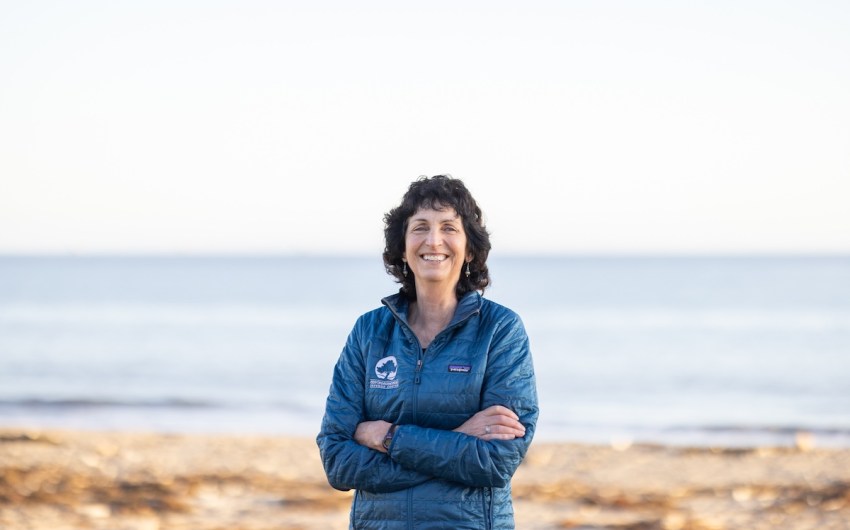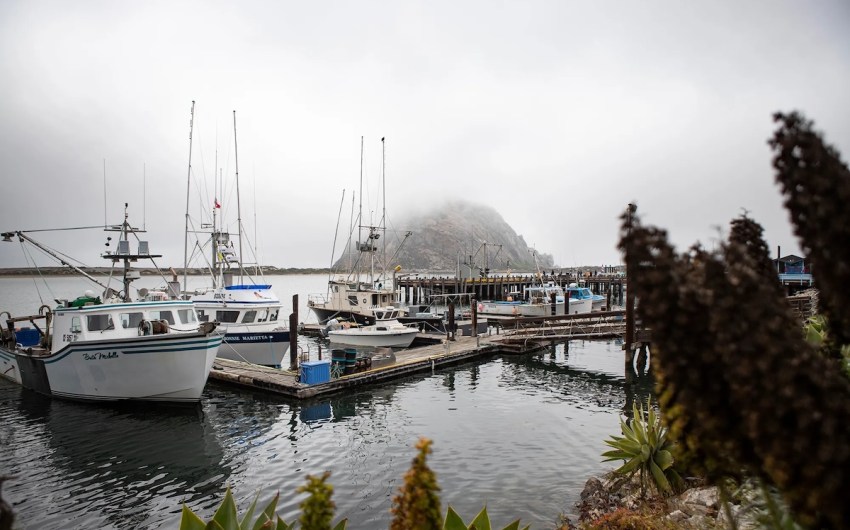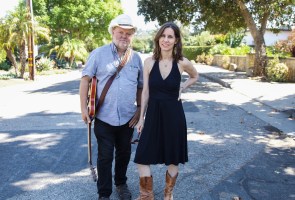Hikers Challenge Montecito Housing Project That Would Pave Over Part of Hot Springs Trail
Trail Advocates Petition County Planning Commission to Require Environmental Impact Report

A one-story, single-family residence project in upper Hot Springs Canyon is being challenged by trail lovers, mainly due to one element: the driveway.
The “Goerner development” — named after applicants John and Marcia Goerner — has been in the works since 2008. It took years to get through multiple rounds of approvals by the Montecito Board of Architectural Review and several county departments.
Right now, the project — also including a guest house, swimming pool, and an 80-foot-long bridge — is in the hands of the Montecito Planning Commission and County Planning & Development, which is accepting public comments on the adequacy of the project’s environmental review until July 8.
In response, the Santa Barbara County Trails Council has put out a call to “Save Hot Springs Trail.” They view the project plans, including widening and extending the existing, 4,000-foot-long driveway and adding retaining walls, as a “formidable threat.”
‘We Are Concerned’
Hot Springs Trail — tucked in the foothills of the Santa Ynez Mountains — is a popular hiking destination, with sweeping views of the coastline overlooking Montecito. Canopied by oak and sycamore trees, it is a lush, rocky, uphill trek to the hot springs that give the trail its name — a series of bubbling springs that attract the likes of families, yogis, hikers, revelers, and everyone in between.
Naturally, people want to protect it.
Trail advocates stress that the development would pave over a “scenic” patch of trail, remove vegetation, disrupt trail use during construction, increase wildfire hazards, and damage the native riparian habitat by removing trees.

They’re asking County Planning & Development (P&D) to require a full environmental impact report, which would require mitigation measures to reduce impacts to public recreation and better protect native habitat and the trail’s “aesthetic character.”
“We are concerned about how the proposed Goerner Project will forever transform the experience of hiking up the Hot Springs Trail,” said Mark Wilkinson, the executive director of the Trails Council.
“We are still trying to figure out how county employees can declare the long-term closure of trail infrastructure as insignificant or easily mitigated,” he added. “The experience of hiking to a place where hot water comes out of the ground is not commonplace.”
Wilkinson was referring to the Draft Mitigated Negative Declaration (MND) prepared by the county, which states that the project will not have a significant environmental impact, or that any potential impact will be reduced to a less-than-significant level.
‘Taking the Proper Steps’
“I think it’s valid to be concerned about impacts to a trail. However, I think that the county and the applicant are taking the proper steps to ensure that the impacts are mitigated,” said Veronica King, the project’s assigned planner.
The development involves paving over parts of the trail located within the riparian corridor, but it would incorporate an “on-road trail” along the newly paved portions. And, according to the MND, “revegetation and restoration are proposed along … Hot Springs Creek to mitigate impacts of vegetation removal.” It also reiterates that much of the environment is already damaged from the 2017 Thomas Fire and following debris flows.
Additionally, the applicant offered to “screen” the retaining walls by planting trees and scrub.

“I’m from here, and personally, I don’t want to see development ruin the natural wonders of Santa Barbara by any means,” King continued. “It’s kind of framed as ‘us against them.’ Or that we’re supporting development that would do that. And that’s not the case.”
Joe Dargel, a P&D supervisor with the Development Review Division, acknowledged that “emotions are running high” because the trail is a beloved and protected resource. However, he said that some concerns have been exaggerated by “the rumor mill,” and he clarified the trail will not be fully closed during construction, which will span about 14 months for the driveway improvements.
“The applicant worked very closely with Planning and Development to come up with an approach to do a bypass trail to allow it to remain open for the entire time,” he said.
The project has been simmering for 16 years, but the Draft MND was only recently completed in April 2024. According to King, the project has gone through more than five county planners.
While family dwelling unit applications are commonplace for the county, this project is complicated because it is in a more rural, high-fire-hazard area — zoned in aesthetically sensitive Montecito. And, again, because of the “size and distance of the driveway,” Dargel said, including the new bridge, which will replace a concrete dip in the road that allows water to flow over it, known as an Arizona crossing.
“It is a little bit unique for an applicant to be taking on. But they do own the property, and it’s zoned for residential use, so they have a bundle of rights to be able to develop it,” Dargel explained.
“We’re hopeful that by looking at the mitigated negative declaration, folks can see what the actual true impacts are and evaluate that for themselves.”
Big Dreams versus ‘Small Portion of Trail’
The Goerners, who live in Illinois, are just trying to build their “dream family home,” according to their agent and land-use consultant Jarrett Gorin. But waiting for the necessary approvals has followed them into their old age. Their son, who lives locally, is now heading the project.
Gorin explained that his clients “have the right to develop a house on their lot,” including the driveway, which is the only way to access the property.

“And so we have to improve that driveway the way that the Montecito fire department requires, which we’re going to do, which doesn’t eliminate anybody’s access to the trail,” he said. “And it would change only a very small portion of that trail — maybe 1,000 feet of trail out of miles.”
They offered to provide the bypass trail at the request of the Trails Council, he added. “We spent time and effort working on that. It’s a little disappointing that they’re trying to hijack the county’s approvals now…. This is supposed to be the family’s house. They want to live there and retire there, and then their sons want to live there.”
Hot Springs Canyon, however, is no stranger to controversy between trail users and homeowners.
“There are a lot of issues in the Hot Springs area,” the Trails Council’s Wilkinson said. “They get confused. Like, are we talking about parking? Are we talking about construction or destruction of the pools?
“What we’re actually talking about is just a small portion of trail, and that if they take out as many trees as are predicted in the document, in order to put the bridge in, and a 16-foot-wide paved road, it’ll transform the area forever. These areas are very sensitive habitats and the fact that there was a fire through there seven or eight years ago doesn’t make it less sensitive.”
Hundreds of people hike Hot Springs Trail every week, Wilkinson emphasized. The Trails Council recently tabled along the trail to inform passersby of the development, and counted 200 people passing through on one weekend morning.
They’ve been petitioning trail users ahead of the closure of the public comment period for the Draft MND on July 8. However, members of the public may reach out to county staff with inquiries or comments on the project after this date, and the hearing date for the project has not yet been selected.
“It’s not so much of a fight with this project,” Wilkinson said. “This project is just the current poster child for the whole issue of trails and development.”
Premier Events
Sun, Jan 26
11:00 AM
Santa Barbara,
17th Annual Santa Barbara Community Seed Swap 2025
Fri, Jan 31
5:00 PM
Santa Barbara
Artist Talk at Art & Soul on State Street
Sun, Jan 26
11:00 AM
Santa Barbara,
17th Annual Santa Barbara Community Seed Swap 2025
Tue, Jan 28
5:00 PM
Zoom
Fire Safety Community Zoom Meeting
Thu, Jan 30
7:00 PM
Solvang
Lucinda Lane Album-Release Show, at Lost Chord Guitars
Fri, Jan 31
9:00 AM
Goleta
AARP FREE TAX PREPARATION
Fri, Jan 31
5:00 PM
Santa Barbara
Artist Talk at Art & Soul on State Street
Sat, Feb 08
10:00 AM
Santa Barbara
Paseo Nuevo Kids Club
Sat, Feb 08
12:30 PM
Solvang
Garagiste Wine Festival
Tue, Feb 11
8:00 PM
Santa Barbara
SBIFF – Tribute to Timothée Chalamet
Thu, Feb 13
8:00 PM
Santa Barbara
SBIFF – Tribute to Adrien Brody and Guy Pierce
Sun, Jan 26 11:00 AM
Santa Barbara,
17th Annual Santa Barbara Community Seed Swap 2025
Fri, Jan 31 5:00 PM
Santa Barbara
Artist Talk at Art & Soul on State Street
Sun, Jan 26 11:00 AM
Santa Barbara,
17th Annual Santa Barbara Community Seed Swap 2025
Tue, Jan 28 5:00 PM
Zoom
Fire Safety Community Zoom Meeting
Thu, Jan 30 7:00 PM
Solvang
Lucinda Lane Album-Release Show, at Lost Chord Guitars
Fri, Jan 31 9:00 AM
Goleta
AARP FREE TAX PREPARATION
Fri, Jan 31 5:00 PM
Santa Barbara
Artist Talk at Art & Soul on State Street
Sat, Feb 08 10:00 AM
Santa Barbara
Paseo Nuevo Kids Club
Sat, Feb 08 12:30 PM
Solvang
Garagiste Wine Festival
Tue, Feb 11 8:00 PM
Santa Barbara
SBIFF – Tribute to Timothée Chalamet
Thu, Feb 13 8:00 PM
Santa Barbara








![Lompoc Opts Out of Wine Country [Corrected]](https://www.independent.com/wp-content/uploads/2025/01/Lompoc_Scenic_Hills_Vineyards_JeremyBall.jpg?resize=850%2C530)














You must be logged in to post a comment.